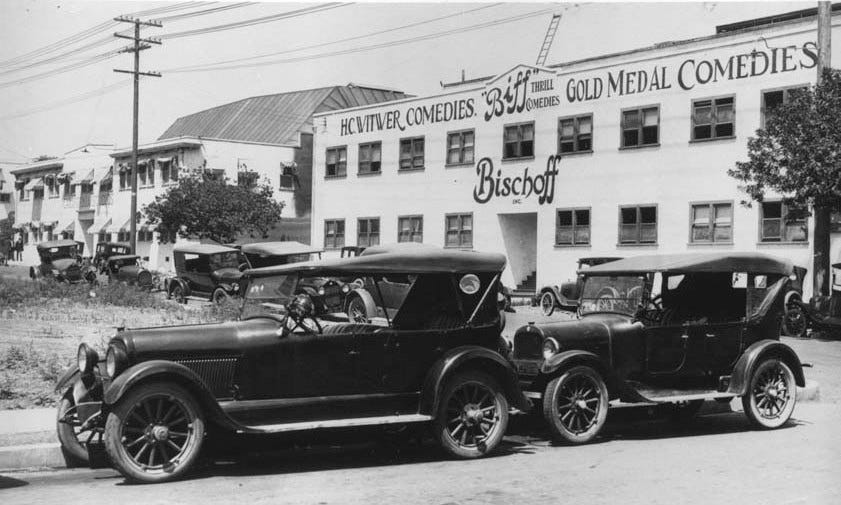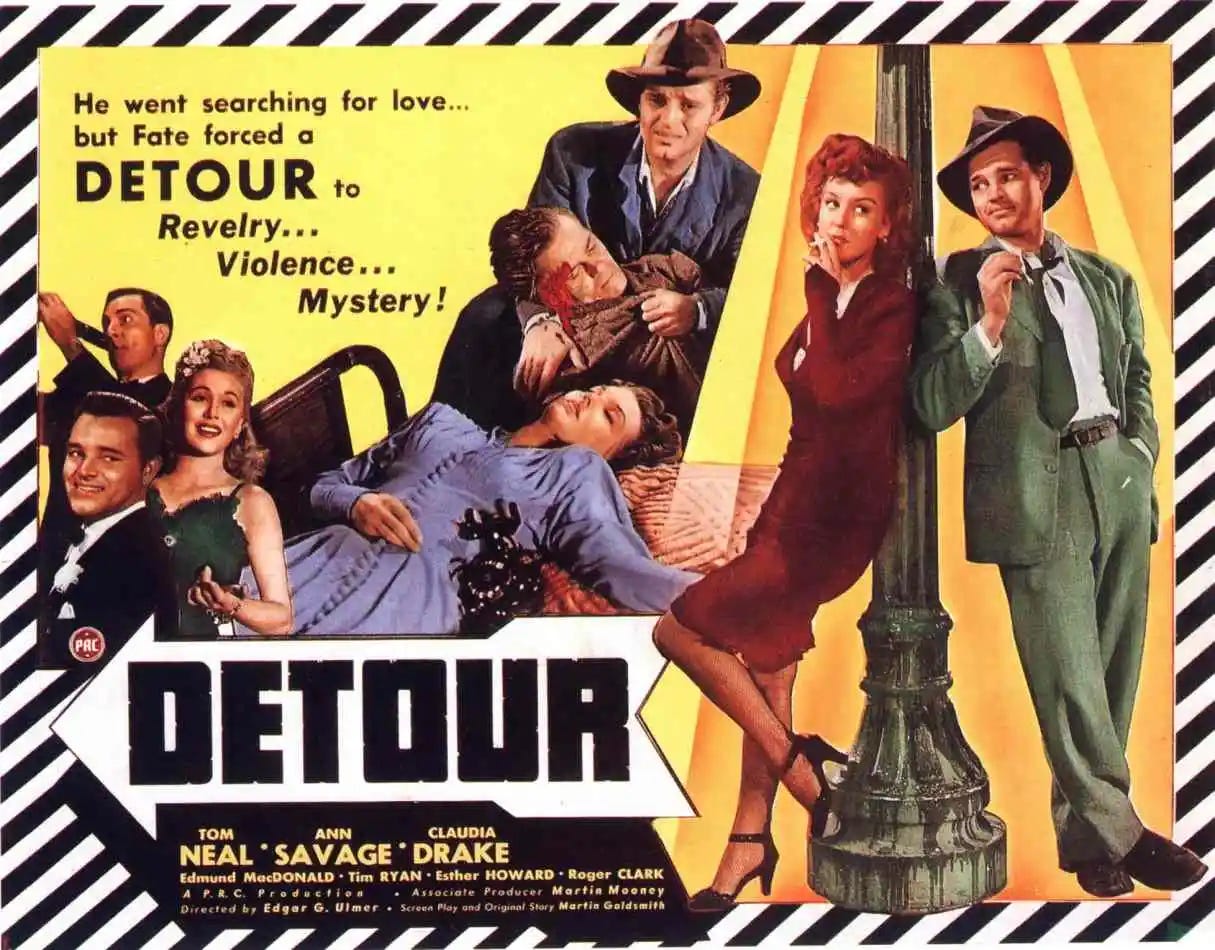Poverty Row - the original Filler content
Special note: Thank you to my brilliant sister-in-law, Katharine Coldiron, for teaching me about Poverty Row and all things film. If you want to read about the importance of bad film, check out her book here or her essay on The Teen Agers, a group of eight films made by Monogram Pictures, a Poverty Row studio.
The Unlikely Heroes of Hollywood's Golden Age: The Story of Poverty Row
In the shimmering landscape of Hollywood's golden era, a peculiar underdog story unfolded, far from the grandeur of major studios like MGM, Paramount, and Warner Bros. This narrative belongs to "Poverty Row," a term affectionately coined for a cluster of small, scrappy film studios that dotted the fringes of the mainstream movie industry from the 1920s through the 1950s. These studios, often nestled on Gower Street in Hollywood, became synonymous with B movies and filmmaking under financial constraints1.
In the ever-evolving landscape of entertainment, the phenomenon of "Poverty Row" studios from Hollywood's Golden Age finds a modern parallel in the "filler content" populating today's streaming platforms. Just as Poverty Row filled a need with its B movies in the early to mid-20th century, contemporary streaming services employ vast quantities of content to populate their platforms in an effort to retain customers in between tent-pole releases (or in the case of Suits, turn filler into a show that breaks viewership records).
The Birth of Poverty Row
The origins of Poverty Row reflect a period of rapid evolution in the film industry. As the roaring twenties ushered in the era of feature films, a gap emerged in the market. Major studios focused on major productions, leaving a vacuum for low-budget, quickly produced films to fill the 2nd slot in a double feature2.
Enter the Poverty Row studios: entities like Monogram Pictures, Republic Pictures, PRC (Producers Releasing Corporation), and Grand National Films. These studios seized the opportunity, specializing in creating films on shoestring budgets, often in a matter of days. This content, though not always critically acclaimed (this is potentially an understatement, many Poverty Row films were quite bad), played a crucial role in the ecosystem of cinema, offering audiences continuous entertainment, especially at independent theaters, and providing a platform for emerging talent. These films covered genres largely ignored by the big studios— predominantly horror and science fiction3. Despite their modest production values, B movies from Poverty Row provided a platform for innovation, experimentation, and the raw storytelling that sometimes outshone the polish of bigger-budget films.
An interesting case within this narrative is Columbia Pictures, which originated as CBC Productions, a Poverty Row studio from 1919 until its transformation in 1924, eventually rising to the ranks of the "Little Three4." Among the studios, PRC, established in 1939 and often viewed as a "low-end" operation within Poverty Row, managed to produce films that received critical acclaim, including Edgar G. Ulmer's 1945 noir classic Detour and Minstrel Man from 1944, the latter being nominated for two Academy Awards. This showcases the complex spectrum of Poverty Row's output, from its contribution to genre filmmaking and talent development to its unexpected achievements in garnering critical success, illustrating the integral role these studios played in the broader landscape of cinema.
From B Movies to Binge-Watching: A Modern Transformation
Fast forward to the present, and the spirit of Poverty Row lives on in the strategies of streaming platforms like Netflix, Amazon Prime, and Hulu. During the Streaming Wars, each platform sought to keep its owned intellectual property (IP) within a walled garden to draw in subscribers. This environment allowed independent production companies and IP owners to thrive. Similarly, before the 1948 United States v. Paramount Pictures, Inc. decision, independent movie theaters had a high demand for Poverty Row films because the major studios owned their own theaters, making it difficult for independents to access those films.
Much like the B movies of the past, a significant portion of content on these platforms serves as "filler"—programs that may not win critical acclaim but fulfill viewers' desire for variety, novelty, or serve specific uses like “ambient streaming” or “background TV.” This strategy ensures that subscribers always have something to engage with, whether they're working late at night or cooking dinner. It keeps subscribers interested, bridging the gaps between more prestigious, high-budget productions. This approach to content creation signifies a shift in viewer habits from scheduled programming to on-demand viewing, emphasizing the importance of both quantity and quality.
The Creative Echoes of Poverty Row
Despite their budgetary and production constraints, both Poverty Row films and modern streaming filler content occasionally break through to achieve unexpected success or cult status. Figures such as John Wayne and directors like Edgar G. Ulmer found their footing in Poverty Row's proving grounds. Wayne's starring roles in Lone Star Westerns and Ulmer's cult classic "Detour" (1945) stand as testaments to the raw talent that Poverty Row nurtured. Moreover, these studios offered opportunities to African-American actors and filmmakers during a time when segregation and racism were rampant in the industry. Similarly, among today's streaming filler, breakout hits emerge (or re-emerge under Netflix’s banner), capturing the public's imagination and proving that creativity can flourish under limitations.
The End of an Era
By the 1950s, the landscape of American cinema began to shift significantly. The rise of television, the decline of the double feature, and changes in film distribution marked the end of an era for Poverty Row. The United States v. Paramount Pictures, Inc. decision dismantled the studio system and its vertical integration, which had allowed major studios to own theaters across the nation, and the advent of television delivered the final blow to Poverty Row. In a last gasp reminiscent of the sale of modern IP to the streamers, many Poverty Row studios sold their film libraries to the TV networks and either shuttered their doors or were absorbed by larger entities. Yet, the legacy of Poverty Row studios did not fade into obscurity. Instead, it offered a compelling narrative of resourcefulness, creativity, and the democratization of film production.
The Legacy of Economical Filmmaking
The legacy of Poverty Row illuminates a fundamental truth about entertainment: there is always a place for content that can be produced quickly and economically, serving as the backbone for more glamorous, headline-grabbing productions. As streaming platforms continue to dominate the entertainment landscape, the lessons and legacies of Poverty Row remind us that from modest beginnings can come the most unexpected and lasting impacts on culture and creativity.
The essence of Poverty Row—its role as a prolific producer of accessible entertainment—resonates in today's digital age, underscoring the timeless value of content that fills the spaces between blockbusters and critically acclaimed masterpieces.
A standard production timetable typically permitted only five or six days for principal photography phase to complete a whole feature film, in contrast to the average shooting duration of 106 days for a Hollywood cinema release at the time.
B-movies were typically shorter than the higher budget features, with many ~75 minutes long. Their productions averaged a shooting ratio of 1.5:1 (~100 minutes of film were shot for a 60 to 80-minute feature) versus a 10:1 ratio for most majors at the time.
Many Poverty Row studios produced Westerns as well, but that genre was prevalent across the industry at the time, including the majors
At the time, there were The Big Five majors (MGM, Paramount, 20th Century Fox, Warner Bros., and RKO), The Little Three majors (United Artists, Columbia, and Universal) and then a long list of Poverty Row studios.




